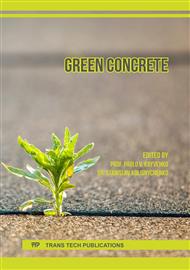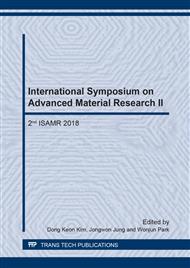p.79
p.85
p.95
p.101
p.109
p.115
p.122
p.128
p.134
Effects of Rubber Particles on Rheological and Mechanical Properties of Concrete Containing CaCO3 Nanoparticles
Abstract:
Lots of waste rubber is being produced in the world and the utilization of it not only mitigate environmental impacts caused by waste rubber disposal but also enhance sustainable development. As a result, rubberized concrete, by incorporation of waste rubber into concrete, should be considered as one of the effective strategies to take advantage of waste rubber. However, problems such as low strengths, weak adhesion between rubber particles and cement pastes, and undesirable pore structures associated with rubberized concrete should be pay more attention to. In this study, the effect of replacement fine aggregate with rubber particles on rheological and mechanical properties of concrete containing CaCO3 nanoparticles was examined through slump, compressive and flexural strength tests. Rubber particles were employed to replace the fine aggregate equally by volume while CaCO3 nanoparticles were used as an equal part of binder by weight. Different sizes and volume contents of rubber particles were evaluated as well as different weight contents of CaCO3 nanoparticles. In addition, corresponding tests were also performed to evaluate the effect of CaCO3 nanoparticles in comparison to concrete specimens without CaCO3 nanoparticles. The results showed that replacement fine aggregates with rubber particles had some influence on the mechanical properties of rubberized concrete, resulting in undesirable findings in terms of compressive and flexural strengths. However, the incorporation of CaCO3 nanoparticles improved mechanical properties of rubberized concrete. Regarding slump test, the rubberized concrete without CaCO3 nanoparticles showed better performance. Considering rheological and mechanical properties, rubberized concrete with 1% CaCO3 nanoparticles presented acceptable results.
Info:
Periodical:
Pages:
109-114
Citation:
Online since:
July 2018
Authors:
Keywords:
Price:
Сopyright:
© 2018 Trans Tech Publications Ltd. All Rights Reserved
Share:
Citation:



